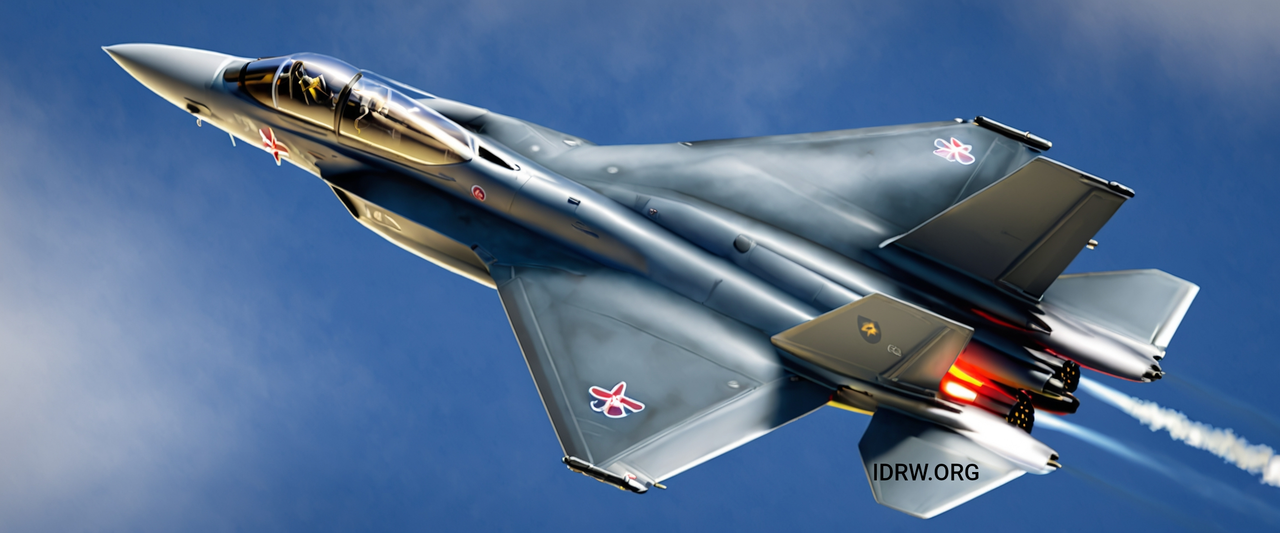SOURCE: RAUNAK KUNDE / NEWS BEAT / IDRW.ORG


According to sources within the Indian Air Force (IAF), who spoke to idrw.org on the condition of anonymity, the IAF has officially confirmed the procurement of two squadrons of AMCA MkI fighter jets powered by the F-414 engine and four squadrons of the advanced AMCA MkII variant equipped with a new 110kN thrust engine. This acquisition, however, marks only the beginning, as the IAF has ambitious plans to further expand its AMCA fleet by 2045 to at least 300 units, according to long-term projections.
The Advanced Medium Combat Aircraft (AMCA) is India’s flagship 5th-generation stealth fighter jet program, which aims to provide the Indian Air Force with a cutting-edge platform to maintain air superiority well into the future. With the first flight of the AMCA MkI slated for 2028 and production expected to commence by 2033, the program has already gained significant momentum, receiving Cabinet Committee on Security (CCS) clearance earlier this year.
The more advanced AMCA MkII, featuring the indigenous 110kN engine developed in collaboration with a foreign aerospace major, will take its first flight in 2034. The IAF has made it clear that this version will form the backbone of the AMCA fleet, replacing ageing platforms like the Su-30MKI and incorporating future-ready technologies.
Initially, the IAF has committed to two squadrons of the AMCA MkI, which will be powered by the General Electric F-414 engines. While this engine provides the necessary thrust for the first wave of AMCA fighters, it is viewed as an interim solution until the new 110kN engine is developed for the MkII variant.
The IAF will procure four squadrons of the AMCA MkII, which will feature this high-thrust engine, offering superior performance and enabling the aircraft to match or exceed the capabilities of other 5th-generation fighters globally. These six initial squadrons represent only the first phase of the IAF’s long-term vision for the AMCA fleet. Sources indicate that as the MkII variant matures, the IAF will focus on inducting more squadrons based on this configuration, further expanding its fleet to around 300 units by 2045.
The Su-30MKI, which has been the backbone of the IAF’s air superiority fleet since the early 2000s, will begin to be phased out from 2040 onwards. The induction of the AMCA will coincide with this, as the IAF transitions from 4.5-generation fighters like the Su-30MKI to 5th-generation platforms with advanced stealth, sensor fusion, and network-centric warfare capabilities.
The AMCA will not just replace the Su-30MKI in terms of numbers, but will significantly enhance the IAF’s overall combat capability. Its stealth design, supercruise capability, and advanced avionics will allow it to penetrate heavily defended airspace and perform a wide range of missions, including air superiority, strike, and electronic warfare.
The IAF’s procurement plans indicate that it views the AMCA MkII not just as a short-term solution, but as a platform that will be continuously upgraded with futuristic technologies. Among the enhancements being considered for future versions of the AMCA are Directed Energy Weapons (DEWs) and Manned-Unmanned Teaming (MUM-T) capabilities.
DEWs, which include laser and microwave weapons, are expected to play a crucial role in future air combat by neutralizing enemy missiles, drones, and aircraft with pinpoint accuracy. The AMCA’s integration with these systems will ensure it remains a formidable platform in the evolving threat landscape.
DEWs, which include laser and microwave weapons, are expected to play a crucial role in future air combat by neutralizing enemy missiles, drones, and aircraft with pinpoint accuracy. The AMCA’s integration with these systems will ensure it remains a formidable platform in the evolving threat landscape.
In another significant development, the Aeronautical Development Agency (ADA), which is leading the AMCA program, has reportedly offered to develop an unmanned version of the AMCA. This proposal is being actively considered by the IAF, which sees unmanned combat aircraft as a critical component of future air power.
An unmanned AMCA could operate in high-risk environments, performing long-endurance missions without putting pilots at risk. The integration of artificial intelligence (AI) and advanced autonomous systems could allow such aircraft to perform missions independently or in coordination with manned platforms, further expanding the IAF’s operational capabilities.
NOTE : Article cannot be reproduced without written permission of idrw.org in any form even for YouTube Videos to avoid Copy right strikes. Websites doing illegal reproductions will get DMCA and Legal Notices.